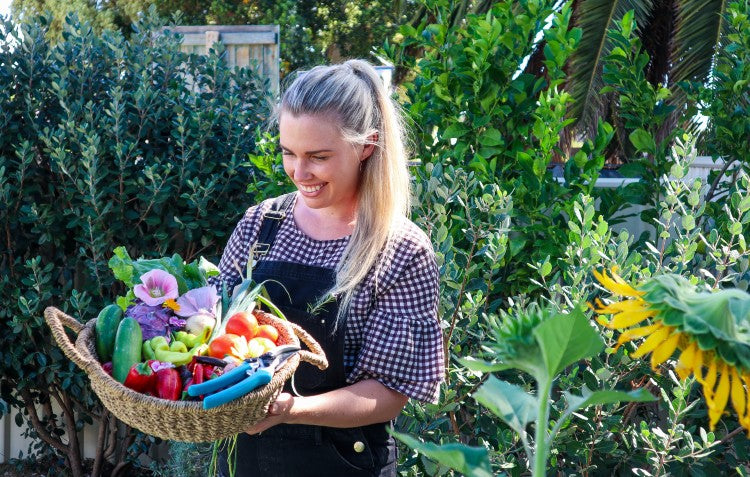Kitchen gardens, also known as potager gardens, are often beautiful blends of ornamentals, edible flowers, herbs, veggies and fruits. Located close to the kitchen for easy access, you'll be able to add fresh produce from the garden to plate all year round. Creating a kitchen garden is easily achievable for almost every home and can help play a part in turning our cities a little greener. A kitchen garden is a great place to cultivate more connections to your food by incorporating fresh ingredients into your daily meals.
Picking fresh from your garden brings a huge sense of pride, even if it is simply a tiny sprig of rosemary or a homegrown chilli. Growing and harvesting your own food is so rewarding and can spark inspiration for you and your friends, family, and neighbours.
Creating a kitchen garden is a great way to incorporate fresh homegrown food into your life, no matter your home or garden's size. Kitchen gardens are perfect for beginner gardeners or anyone that wants quick and convenient fresh food to add an extra boost of nutrition and flavour to their daily meals.
What is a kitchen garden, and why should I create one?
Kitchens gardens come in all shapes and sizes. Whether it’s a raised planter box, grow bag, hanging garden, hydroponic planter or simply some pots on your windowsill or balcony. There is an option for everyone! Kitchen gardens are a great way to grow everyday herbs and ingredients you can pick and enjoy quickly and conveniently.
The difference between a kitchen garden and a vegetable garden
A kitchen garden is a little bit different from a regular vegetable garden for a few reasons. A kitchen garden is located as close to your kitchen as possible, with convenient and easy access to utilise daily. This means you will be able to quickly go and pick herbs and veggies as you need them for each meal. Harvesting as you go like this allows you to choose fresh ingredients from the garden to plate and only take what you need so that nothing goes to waste.
The plants you grow in a kitchen garden also tend to differ from a vegetable patch. For kitchen gardens, it's best to grow produce you regularly use that’s quick to grow or are perennial. This means you will always have fresh ingredients ready to go. Choosing plants that can be harvested throughout their growth cycle is also a great idea.
Vegetable patches, on the other hand, take longer to mature and may need to be harvested once at the end of their growing period rather than continuously. This means you can position your vegetable patch further away from the house, as you will not need to pick and check on them as often.
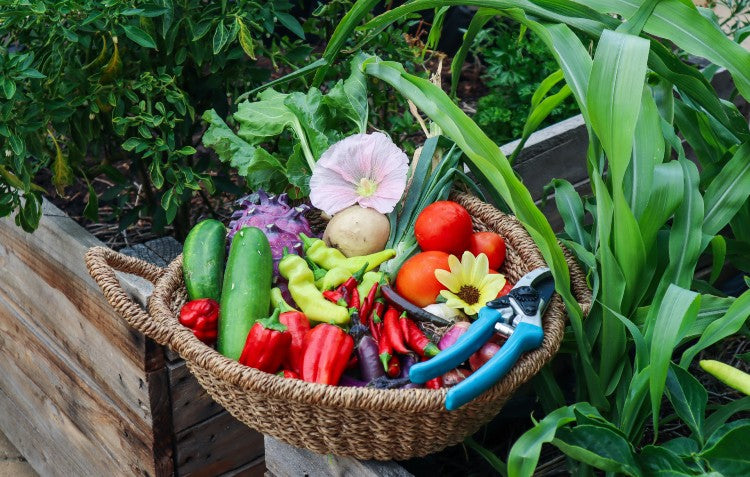
Designing your kitchen garden
Kitchen gardens are traditionally not only productive but also aesthetically beautiful. Design your kitchen garden in a way that reflects your home decor or your personal design preference, whether that is symmetrical and structured, wild and free, colourful and bright, or modern and sleek. Take a look around your home and choose colours or materials that will help your kitchen garden look like it has always been a part of your home. A little bit of forward design planning will help you immensely when you purchase your materials or pots and not feel overwhelmed with all the options and colours available.
How to set up a kitchen garden
Choose a location that gets plenty of sun or diffused sunlight, such as a bright balcony, windowsill or courtyard. Then, choose a container or gardening system that will work best in that space. If you are growing inside and don't have a lot of light, there are some great indoor garden systems on the market nowadays. A sunny window will often provide plenty of natural light to grow a range of fresh herbs. For courtyards or balconies, you can select pots, grow bags, hanging gardens or raised garden beds. Choose high quality, organic compost and plant your seeds or seedlings according to label instructions.
It's a good idea to plant your herbs and veggies mixed in together rather than planting all of one type in a row. Diversity in the garden looks beautiful and plays a significant role in creating a healthy and thriving ecosystem. Planting with variety can help reduce issues with pests as it adds a barrier of protection between plants.
If your kitchen garden is outside, installing solar lights is a beautiful and functional finishing touch. Incorporating solar lights into your kitchen garden design will make it easier for you to see your garden better at night. You will be able to make a last-minute dash to the yard for fresh herbs or salad greens safely, without tripping over objects or having that dreaded feeling of stepping on a snail. You will also have better light to see what you are picking without the struggle of holding a torch and trying to harvest the right veggies.
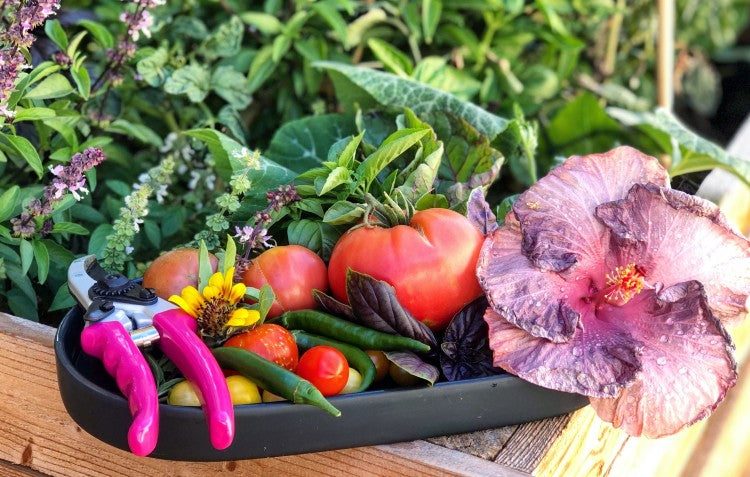
What to grow in a kitchen garden
Choose herbs that you enjoy eating and regularly use in your cooking, baking, teas and cocktails. Herbs are a great place to start as they are easy to grow, pest resistant and can thrive in a range of different light levels. They tend to be more forgiving than other edible plants too. Salad greens, cherry tomatoes and dwarf citrus are also great additions to your kitchen garden. Have fun with it and create beautiful edible gardens you can enjoy visually and utilise in your daily meals.
Below is a suggested list of edibles for your kitchen garden:
- Parsley
- Mint
- Thyme
- Sage
- Chives
- Coriander
- Chilli
- Edible flowers
- Lemon verbena
- Rosemary
- Basil
- Rocket
- Lettuce
- Bay leaf
- Sugar snap peas
- Strawberries
- Radishes
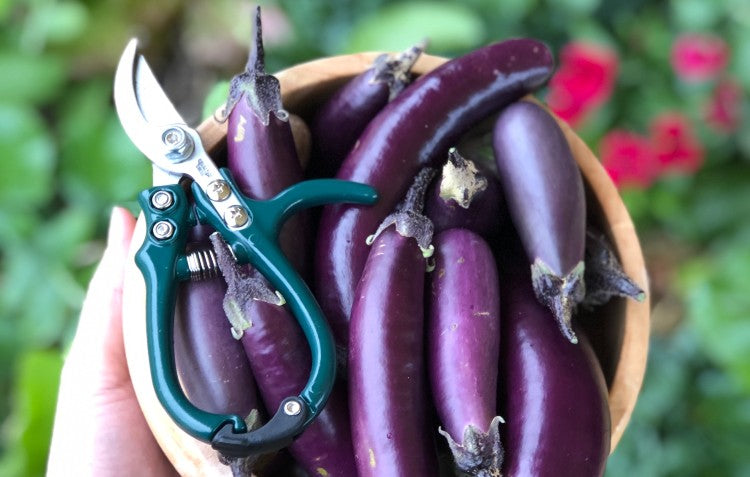
How to care for your kitchen gardens
Keep your gardens hydrated, especially if they are in small pots in a sunny location. You can also give your kitchen gardens an extra boost of nutrition with Hoselink’s Garden Fertiliser or Seaweed Tonic. Strong, healthy plants will produce more and become more pest resistant.
Get the most out of your kitchen garden
The more you cut and use your herbs and veggies, the more they will produce. The plant's main focus or goal is to grow flowers or fruit to produce seeds for its future existence. So, by harvesting and using your herbs regularly, you may receive more abundance from each plant. Try drying out your herbs and chillies, or make a delicious garden pesto to preserve and extend your harvest. Dried herbs can be crushed and placed in a jar or added to salt for delicious homemade seasoning. These make fantastic gifts from the garden for everyone to enjoy.
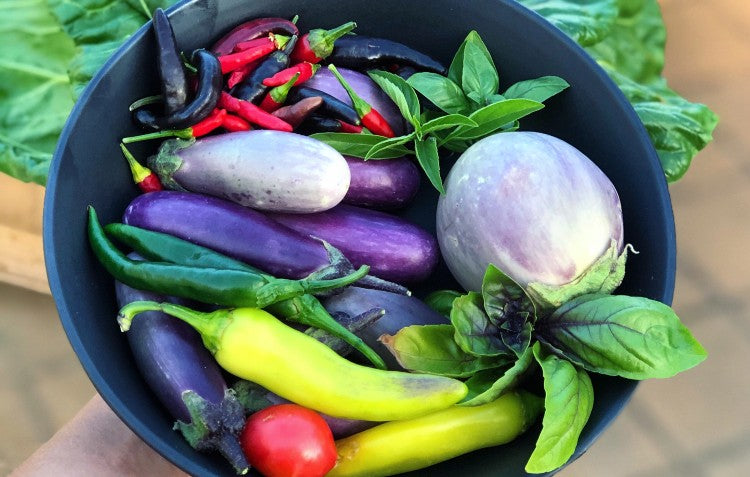
Slow down and grow
Creating a beautiful, productive garden is also a great way to slow down and practise mindfulness. Put down your phone and spend a small amount of time each week watering your plants, checking for bugs and picking your fresh produce. Meditation can come in many forms, and eliminating distractions to focus on tending to your garden instead can be incredibly therapeutic. In a world where we are constantly on the go, a garden can help bring balance and offers a space to slow down and reset.
Creating a kitchen garden has so many incredible benefits. It adds an attractive design element to your home with the bonus of producing delicious, nutrient-dense food. Kitchen gardens are low maintenance and provide a great way to save money on expensive fresh herbs. In a world where we have lost touch with where our food comes from, a kitchen garden is an excellent step towards taking back your food security.
‘Sometimes the smallest step in the right direction ends up being the biggest step of your life.’ - Naeem Callaway

